Shan SH-168DLCD
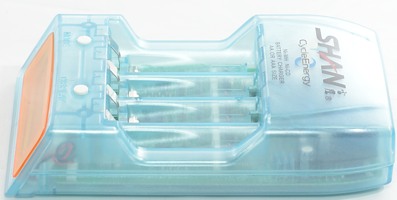
This is a NiMH only charger and it can charger AA and AAA batteries. The charger has some advanced measurement functions.
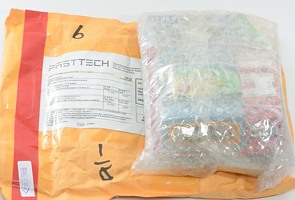
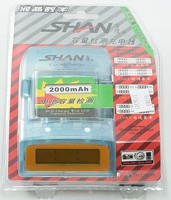

The charger was delivered in a package of clear plastic.
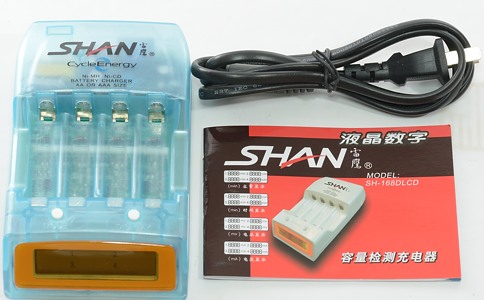
The contents of the package is the charger, a mains cable and a instruction booklet, half of it in English.
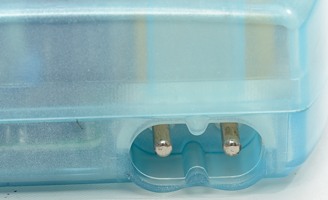
The power is connected with a standard cable. The charger is rated for 100 - 240VAC and 50/60Hz, i.e. it is universal voltage.
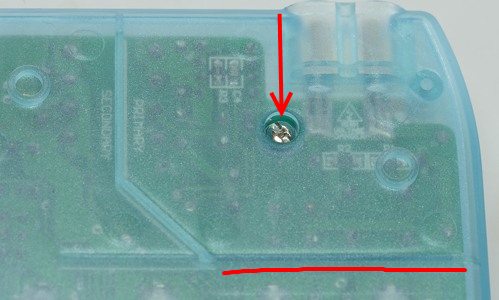
Because the charger is transparant it is possible to look at how it is constructed.
At the red line is a plastic barrier that blocks mains voltage from the low voltage section. I was a bit worried about the screw at the red arrow, was it to close to the mains input, a test with 5000 volt did not show any problems.
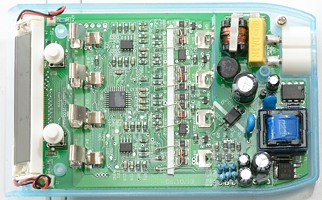
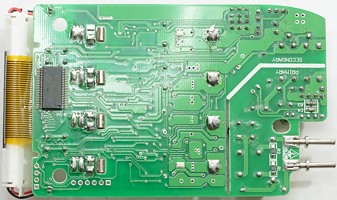
I wanted a better look, than I could get through the plastic (Click the pictures for larger versions).
Generally it looks good, but a few solder joints could be better.
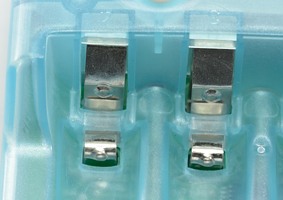
The battery holder has two steps at the minus end, one for AA and another for AAA, this makes it possible for the charger to detect battery type and adjust charge current accordingly.
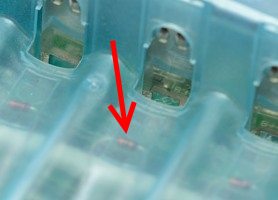
At the plus end the connection is slightly retraced giving a mechanical polarity protection.
Also note the diode at the red arrow, it is used to sense the battery temperature.
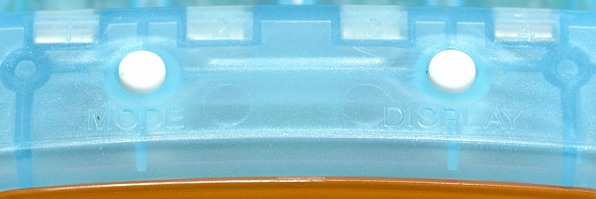
The charger has two buttons, marked mode and display.
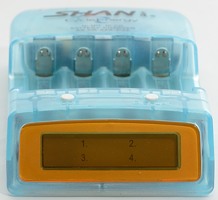
On the front of the charger is a display with a position for each battery, when the charger is charging or discharging the backround light is on, when finished the light turns off, but can be activated again by pressing the display button.
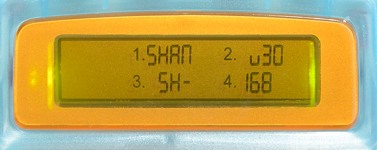
When the charger is powered on, it will show the brand and model number.
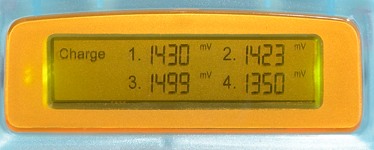


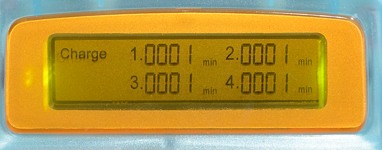
The display button can be used to step through four different sets of display.
When the charger is working (Charging or discharging), the last digit in each value is flashing.
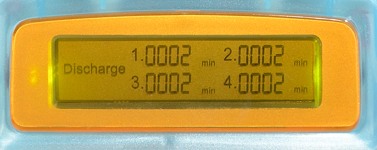
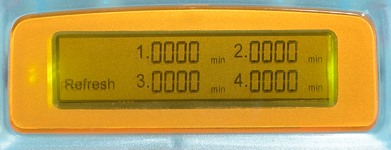
With the mode button it is possible to select between Charge, Discharge and Refresh.
Refresh is a discharge followed by a charge.



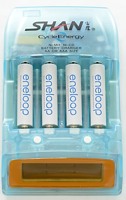
Measurements
- Discharge battery with less than 0.22mA when power is disconnected.
- Charge battery with less than 0.4mA when power is connected and charge cycle is done.
- Charge will restart charging after power loss or battery insertion.
- It takes about 10 minutes to detect a full battery.
- The voltage display is within 3 mV (0.003 Volt) on my unit, this is very good.
- The minute display is shows about 2 minutes to much in two hours.
- The mAh display looks to be a bit low while charging, but I cannot verify it, due to the pulsing current.
Channel #1
.png)
Notice the red voltage curve, it drops slightly before the charger stops, this means the charger uses -dv/dt or temperature to detect "end of charge" (These are the best ways). It does use -dv/dt with temperature as backup.
.png)
A Enelope XX takes longer and is charge with more mAh.
.png)
With AAA batteries a lower charge current is used.
.png)
A discharge test is with 0.5A, the test stops just below 1 volt.
.png)
A AAA cell is discharged with the same currents as a AA cell.
.png)
Selecting a refresh will first discharge then battery, then charge it.
Channel #2
.png)
.png)
Not much difference from channel #1
Channel #3
.png)
.png)
Not much difference from channel #1
Channel #4
.png)
.png)
Not much difference from channel #1
Multiple channels at the same time
.png)
With two batteries the charger is still maintaining full charge rate.
.png)
With 3 batteries the charge rate is slightly down.
.png)
With 4 batteries the charge rate is down to 0.5A
.png)
Discharge with multiple batteries does not change the discharge rate.
.png)
Doing a charge with four batteries with different initial charge, shows that it will stay at the lowest rate during the full time, even when some batteries are filled.
.png)
Starting with one battery and putting more batteries in during the charge, will reduce the charge rate.
Curves
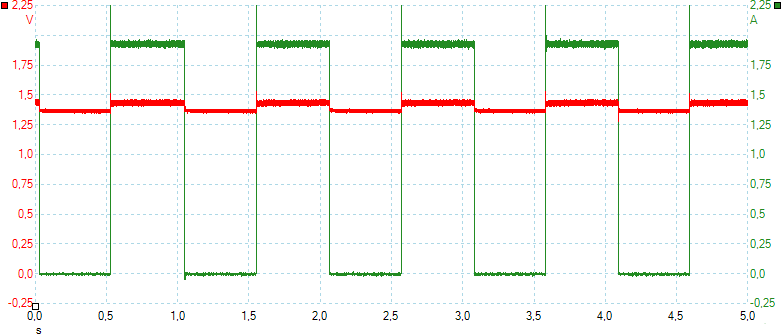
Charging one or two AA whill show a 50% duty cycle of the charge current. The actual charge current is about 2A.
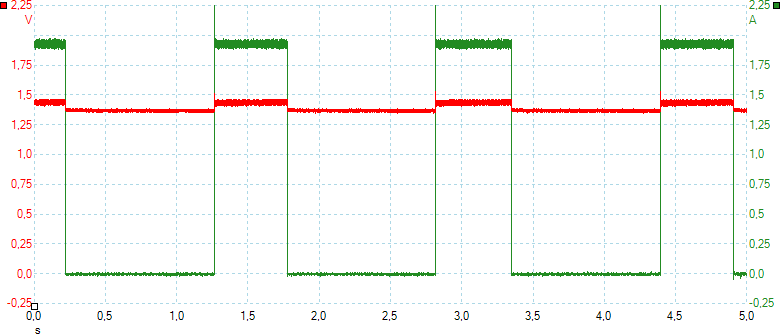
With 3 batteries the duty cycle is changed to 33%, i.e. 1/3 time to each battery. The current is the same.
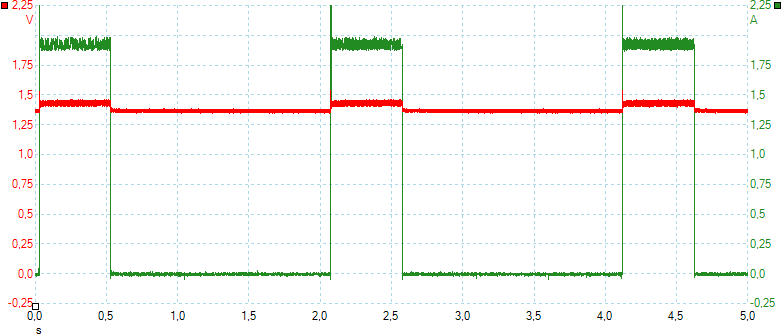
With 4 batteries the duty cycle is 25%, again with 2A, giving an average current of 0.5A.
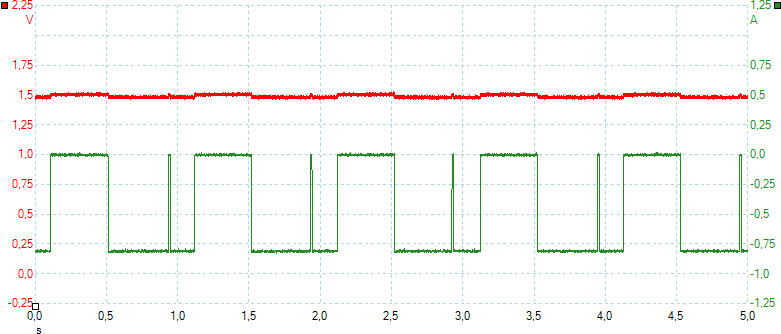
Discharging is also pulsing.
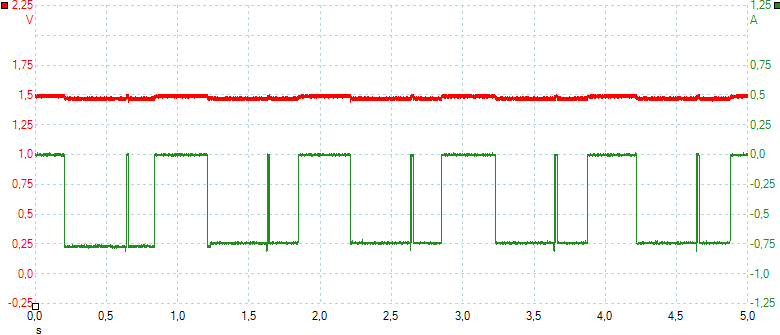
The pulsing is independ on the number of batteries, the above curve is with 4 batteries and looks very much like the one battery discharge curve.
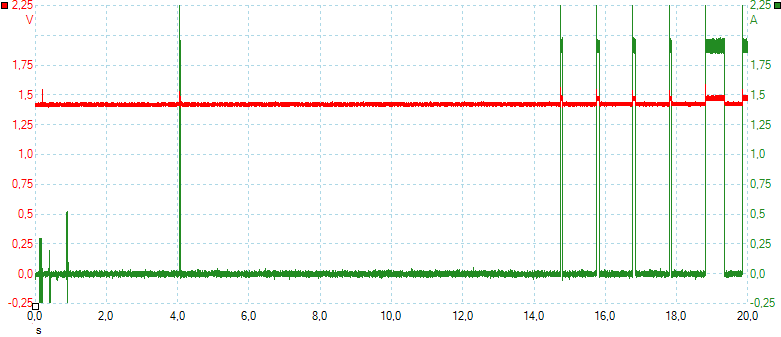
The charger uses about 18 seconds to start.
Testing the mains transformer with 2500 volt and 5000 volt between mains and low volt side, did not show any safety problems.
Conclusion
This charger and battery tester works as expected and I like it. The only function I am missing is a "capacity test", it is easy enough to do, first do a charge, then a discharge, but a combined function (like the Refresh) would have been more convient.
This charger is very useful for checking the state of batteries and detecting capacity loss.
Notes
The patterens in the green current curves are due to interference patterns and not variations in the charge current.
Here is an explanation on how I did the above charge curves: How do I test a charger
 )
)